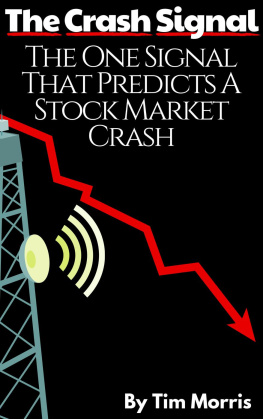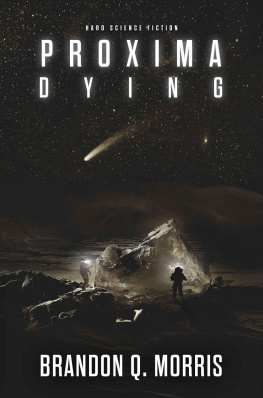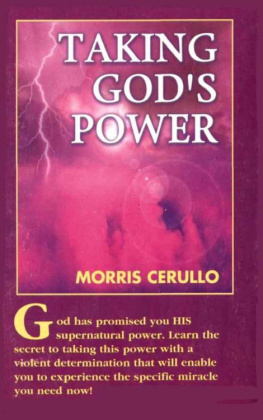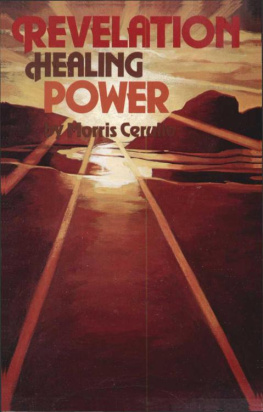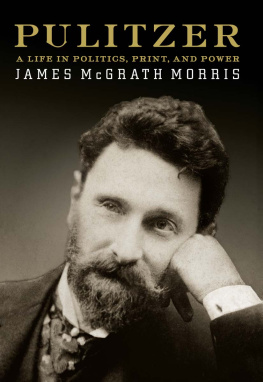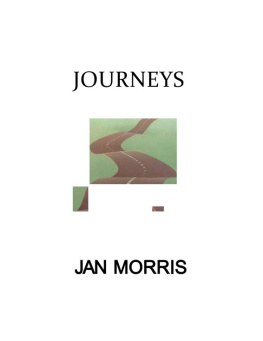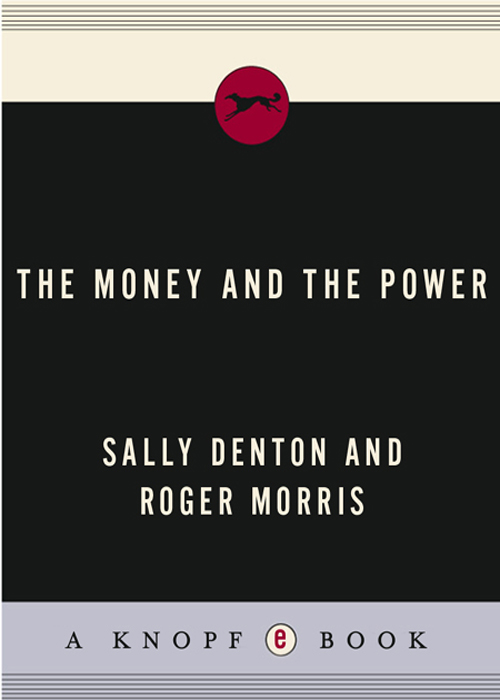1. Meyer Lansky
The Racketeer as Chairman of the Board
2. Benny Binion
The Outlaw as Icon
3. Pat McCarran
The Democrat as Autocrat
4. Bugsy Siegel
The Executioner as Entrepreneur
5. Hank Greenspun
The Hustler as Conscience
6. Estes Kefauver
The Opportunist as Prophet
All rights reserved under International and Pan-American Copyright Conventions. Published in the United States by Alfred A. Knopf, a division of Random House, Inc., New York, and simultaneously in Canada by Random House of Canada Limited, Toronto. Distributed by Random House, Inc., New York.
Knopf, Borzoi Books, and the colophon are registered trademarks of Random House, Inc.
Denton, Sally.
The money and the power: the making of Las Vegas and its hold on America, 19472000 / by Sally Denton and Roger Morris.
p. cm.
Includes bibliographical references (p. ) and index.
1. Las Vegas (Nev.)Civilization20th century. 2. Las Vegas (Nev.)Economic conditions20th century. 3. Las Vegas (Nev.)Biography. 4. CelebritiesNevadaLas VegasHistory20th century. 5. PoliticiansNevadaLas VegasHistory20th century. 6. Organized crimeNevadaLas VegasHistory20th century. 7. Political corruptionUnited StatesHistory20th century. I. Morris, Roger.
II. Title.
F 849. L 35. D 46 2001
For Gloria Loomis and Maya Miller,
true angels of this book
and for those of the Sweet Promised Land,
humbled by long neglect
There has never been another place like it for connecting the unconnectable.
Michael Herr, The Big Room
Prologue
First City of the Twenty-first Century
The city is as up front as it ever was, for it can deny neither its purpose nor its psychology.
Michael Ventura, Literary Las Vegas
I t is a soft, starlit night in mid-May 1998, the high desert bathed in a temperate spring darkness.
Dressed in polo shirts and tailored slacks, the men stream out of the CasaBlanca casino and spa at Mesquite, Nevada, on the Utah border, one of them telling his usual lewd jokes, the others laughing, as they clamber into the three stretch limousines idling at the entrance. The group has spent the weekend as they expected, flying to the resort in chartered jets, relaxing around the pool, enjoying massages and facials, trying their luck at the tables. Over a lengthy dinner one of their hosts secretly calls the Last Supper, they avidly discussed how to handle the latest half-billion dollars in drug proceeds already on hand. Waiters heard them cheering and shouting excitedly behind the closed doors of the private banquet room.
To celebrate agreement on dividing the money, they plan to finish the evening with the special attraction promised for the weekendNevadas Chicken Ranch brothel some miles away, renowned for its beautiful women and rustic setting. Chauffeurs drive them in caravan, eight to a car, along Interstate 15 southwest of Mesquite. The highway follows the original Mormon Trail by which America first came to the Las Vegas Valley 143 years before. Further west, the road will begin to parallel another, later migrant path, old Highway 91 from California, whose approach to the city would be known to the world as the Strip. The routes are historic if little-known passageways of people, money, and power, and this midnight these men are part of an unbroken tradition.
The unmistakable glow of Las Vegas already fills the horizon when the cars suddenly slow and pull onto the shoulder surrounded by flashing lights. Sorry, I guess I was speeding, one of the chauffeurs explains to his passengers. But they see there are too many police cruisers for a traffic stop.
U.S. Customs officers now encircle the limousines and take into custody twelve prominent Mexican bankers along with their lawyers and associates. Others riding with them are undercover American agents, posing as the suspects partners and chauffeurs. What the Customs men call their takedown here in the southern Nevada desert climaxes an unprecedented covert operation, part of more than 140 arrests at six locales across three continents. The largest, most comprehensive drug-money laundering case in the history of United States law enforcement, Treasury Secretary Robert Rubin calls it in the later public announcement in Washington. The investigation has uncovered crimes in the hundreds of billions of dollars amid international corruption at the highest levels of business and government. And now, as over the past half century, Las Vegas is a nexus of it all.
From the outset, the Mexican criminals insisted on meeting in Las Vegas for regular exchanges with their supposed American partners. The city seemed to both sides a natural, traditional setting, like a summit of governments in Geneva or winter Olympics in the Alps. All of them felt comfortable in Vegas, knew they could talk freely there, a U.S. official says in recalling the meetings. They stayed in plush suites at Steve Wynns famous Mirage resort, their undercover American hosts spending freely to entertain them. Casino executives up and down the Strip treated the well-known, Armani-suited traffickers and bankers as high rollers, gave them a lavish welcome of special privileges. At centurys end, as always, the city is a fount of cash legal and illegal for criminals, businessmen, and politicians from every continent, though by the mid-1990s there was relatively little of the comparatively crude processing done so commonly over the decades at Nevada tables. Scarcely three years before this undercover investigation, other Customs agents in Las Vegas had come upon signs of an intricate and far-flung financial conspiracy involving Japan and Korea and the suspected investment by American and international organized crime of hundreds of millions in some of the citys most famous new casinos. But the mere five agents posted to Las Vegas, long one of the world centers of money laundering and criminal finance, were no match for a network that controlled fortunes, deployed a fleet of private jets, and marshaled an array of bankers, lawyers, politicians, and corporate giants. Like Mexican drug lords, the Strip commands its own governments and financial systems, its own sophisticated means in the world at large.
Reviewing some of the 3,000 hours of audio and video recordings of their dealings in the stingrepeating, Play it again, play it againCustoms agents code-named their case Operation Casablanca, after the motion pictures supposedly familiar line, Play it again, Sam. After one of them mentioned driving by a casino named the CasaBlanca in Mesquite, not far from Las Vegas, they decided to stage some of the climactic arrests there, an apt touch as well as a more secure setting. In Vegas everybodys watching everybody else, a U.S. agent recalls. The casinos knew these people were high-level Mexican Mafia, and you never know who might have noticed something and tipped them off. While the proprietors of the CasaBlanca knew nothing of the operation, Customs men posed as new owners of the casino, inviting the Mexicans for another enjoyable interlude in Nevada, a meeting to parcel more profits and a memorable visit to the Chicken Ranch. Like the gatherings at the Mirage, it was all credible enoughthat American drug-money brokers would own a casino, and that the resort was a place to do business, and to celebrate. The key to being successful undercover, one U.S. agent said afterward, is to blend a lot of reality with the mask.


